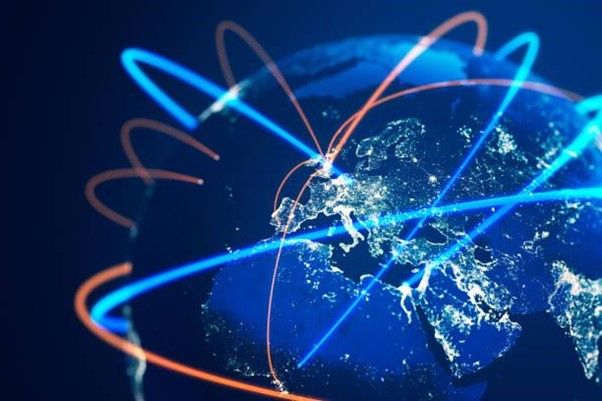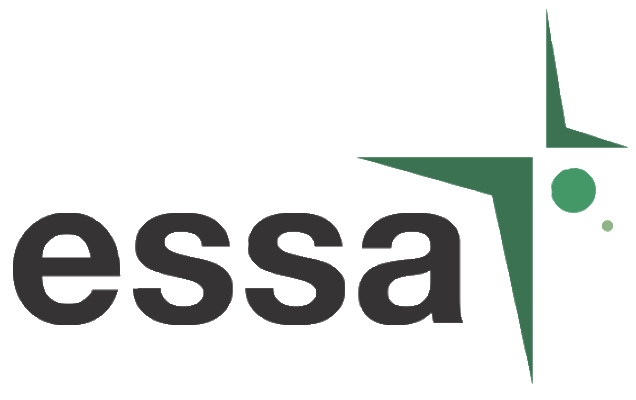This article speaks on the intersection between Artificial Intelligence and International Trade. In particular, it explores how AI can enhance the trading process. However, while AI is beneficial, traders and firms must be mindful of AI’s shortcomings and disadvantages.
[Milena is in her penultimate year of studies, studying a Bachelor of Politics, Philosophy and Economics/Bachelor of Arts at Monash University, specialising in Economics with a major in politics and minor in bioethics. She is interested in the field of microeconomics and economic policy, specifically in how economic methodologies can aid policy and improve living standards.]

The rapid developments in technology have allowed artificial intelligence (AI) to enter spaces which they have not been utilised in before. AI has now entered spaces such as globalisation and intercontinental trading, influencing market, risk, and predictive analyses. Traders can use AI to work towards strengthening current trading processes and enhancing economic growth.
The Benefits of AI in the Trading Process
AI Influences Market, Risk, and Predictive Analysis
AI technology has the potential to improve efficiency through market, risk, and predictive analysis. AI can be utilised to analyse large and vast amounts of data, which can be helpful in identifying consumer behaviour and market trends. Through this, traders can make more informed decisions, improve analysis procedures, increase the accuracy of risk assessments, “decision-making [processes] and mitigation strategies” (Birkeland 2023). AI can help mitigate risks through fraud detection capabilities, enhancing risk assessments (International Trade Council 2023). AI can also provide traders with efficient recommendations, thorough objective analysis, and predictions which can improve the accuracy of predictive analysis processes (Reuters 2024). This improves the decision-making process, as objective analysis increases accuracy and helps traders understand market trends and consumer behaviour, allowing them to respond to a change in trends effectively.
Moreover, AI can enhance market, risk, and predictive analysis as AI can “reduce human error in the logistic process” (OECD 2022: 25). Indeed, AI’s error rates “are often lower compared to humans” (Martin 2023), and it is not biased in its recommendations. Therefore, AI is more efficient at analysis in contrast to human analysts. Ultimately, AI’s capabilities can significantly improve trading processes by enhancing market, risk, and predictive analysis procedures; overall improving productivity in the trading process.
AI Increases Productivity in the Trading Process
AI can increase productivity in the trading process as it can increase technical efficiency and reduce trade costs. AI can speed up trading processes as it “can automate repetitive processes, such as in product classification” (Reuters 2024). As discussed by the Organisation for Economic Co-operation and Development (OECD), AI can enhance trading through “greater supply chain efficiency” (OECD citing Meltzer 2022: 12). This means that AI can establish “more streamlined and automated ‘smart’ manufacturing” (Ibid), which will improve prediction accuracy and traders’ knowledge of consumer demands. In addition, AI can be used to identify other areas where the trading process can be improved. For instance, by “optimising logistics operations” (OECD citing Tsolakis et al 2022: 12), AI can identify how traders can reduce their greenhouse emissions, while maximising their productive capacity. Through this increase in efficiency, AI can “help firms create value from data and reduce trade costs.” (OECD citing Agrawal, Gans and Goldfarb 2022: 4) Lower costs are achieved because an increase in technical efficiency leads to greater economies of scale, reduces inefficiencies through greater accuracy, and saves time (Nesbitt 2017); reducing costs. Overall, AI is needed within international trade, as it improves the trading process. It elevates firm efficiency; maximising supply chain efficiency, increasing productive growth, and reducing trading costs.
The Short-Comings of AI in the Trading Process
While AI improves the trading process, firms must be mindful of the implications around adopting AI technologies into these processes.
AI can Increase the Cost of Trade
While traders can utilise AI to reduce production costs through greater efficiency, it may also increase the cost of trade. AI could increase the cost of trade as it is costly to implement and fix. The initial adoption of AI and transition to this technology can reduce efficiency for firms. This can result in short-term costs and inefficiencies, increasing the cost of trade (Meltzer 2018). Further to this, maintenance costs may also be high, and it can be very pricey to repair damaged AI technology. In addition, with AI being infused into goods and services, it is difficult to determine whether AI-infused products fall under the General Agreement on Tariffs and Trade (GATT) or the General Agreement on Trade in Services (GATS). This creates a “fragmented landscape” (Krummenacher 2023), where the various trade agreements have different rules in terms of AI-infused products. This fragmentation leads to inconsistencies for firms and “is likely to boost the cost of trade” (Ibid). Therefore, AI exports can create policy gaps which require businesses and traders to navigate multiple trade agreements, resulting in short-term inefficiencies and greater costs to trade.
AI can Result in a Loss of Jobs
If trading firms begin to replace workers with AI technology, this would lead to mass unemployment for workers within the trading process. “This could include automation of routine and nonroutine white-collar jobs, which reduces international trade where these jobs are on-shored.”(Meltzer 2023: 129) Given this, traders should utilise AI as a tool to complement workers. As highlighted by Meltzer (2023), “AI compliments existing jobs and leads to higher productivity, this could open up new opportunities for international trade in services.” (Ibid) Hence, AI could result in unemployment if firms and traders decide to replace their workers in exchange for greater efficiency. Instead, firms should use AI as a tool to aid workers; maximising productivity, whilst maintaining employment and creating greater opportunities within international trade.
Conclusion
As a result, AI technology will continue to impact our lives, where it has quickly entered spaces such as international trade and globalisation. AI has the ability to revolutionise trading processes through greater and more efficient market, risk, and predictive analysis. Furthermore, AI will improve firm efficiency through smart manufacturing and lower trading costs. This increases economies of scale, reduces firm inefficiencies, and ultimately enhances economic growth. However, while traders should continue to adopt AI into their practices to reap these rewards, they must be mindful of the short-comings of AI and operate accordingly. Traders must be mindful of how AI could potentially increase the cost of trade, and plan to navigate the fragmented landscape AI exports brings. Additionally, firms should adopt AI technology but as a tool rather than as a worker, to maintain employment and increase productivity.
References
Agrawal, A., J. Gans and A. Goldfarb. (2017). The Economics of Artificial Intelligence: An Agenda, National Bureau of Economic Research University of Chicago Press.
Birkeland, L. (2023). AI to Transform Risk Assessment. https://larsbirkeland.com/ai-to-transform-risk-assessment/.
International Trade Council. (2023). Exploring the Role of Artificial Intelligence in International Trade. https://tradecouncil.org/exploring-the-role-of-artificial-intelligence-in-international-trade/.
Krummenacher, P. (2023). International Trade and Artificial Intelligence: Is Trade Policy Ready for Chat GPT. https://www.iisd.org/articles/policy-analysis/international-trade-artificial-intelligence-chatgpt?.
Martin, J. (2023). AI vs Human Intelligence: Accuracy and Error Rates. https://futuresavant.com/ai-vs-human-intelligence-accuracy-and-error-rates/.
Meltzer, J. (2018). The Impact of Artificial Intelligence on International Trade. https://www.brookings.edu/research/the-impact-of-artificial-intelligence-on-international-trade/.
Meltzer, J. (2023). The Impact of Foundational AI on International Trade, Services and Supply Chains in Asia. https://doi.org/10.1111/aepr.12451.
Nesbitt, J. (2017). 4 Ways Artificial Intelligence is Transforming Trade. https://www.tradeready.ca/2017/topics/import-export-trade-management/4-ways-artificial-intelligence-transforming-trade/.
OECD. (2022). Artificial Intelligence and International Trade. OECD. https://www.oecd.org/publications/artificial-intelligence-and-international-trade-13212d3e-en.htm.
Reuters, T. (2024). Keeping Up with AI Development in International Trade. https://tax.thomsonreuters.com/blog/keeping-up-with-ai-development-in-international-trade/.
Tsolakis, N. et al. (2021). “Towards AI Driven Environmental Sustainability: An Application of Automated Logistics in Container Port Terminals.” International Journal of Production Research, pp. 1-21. https://doi.org/10.1080/00207543.2021.1914355.


